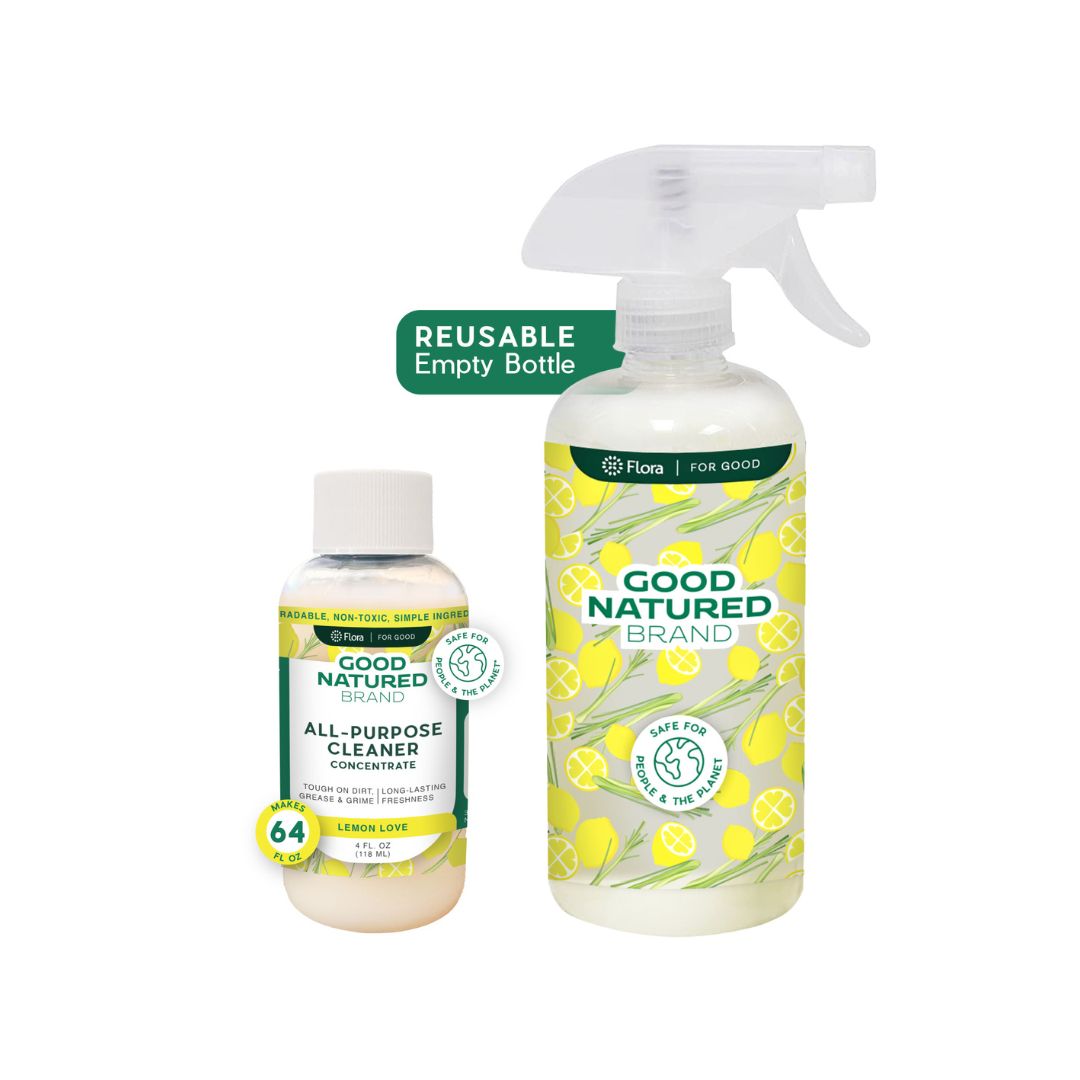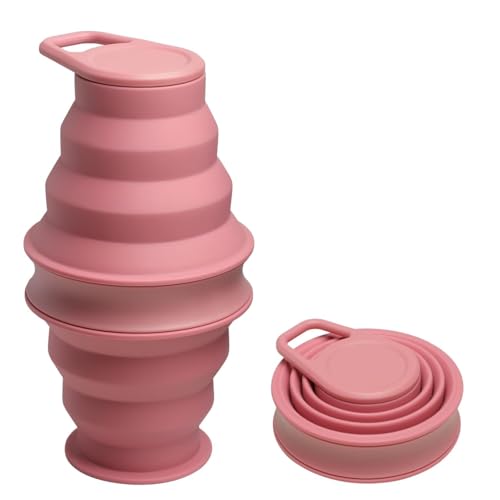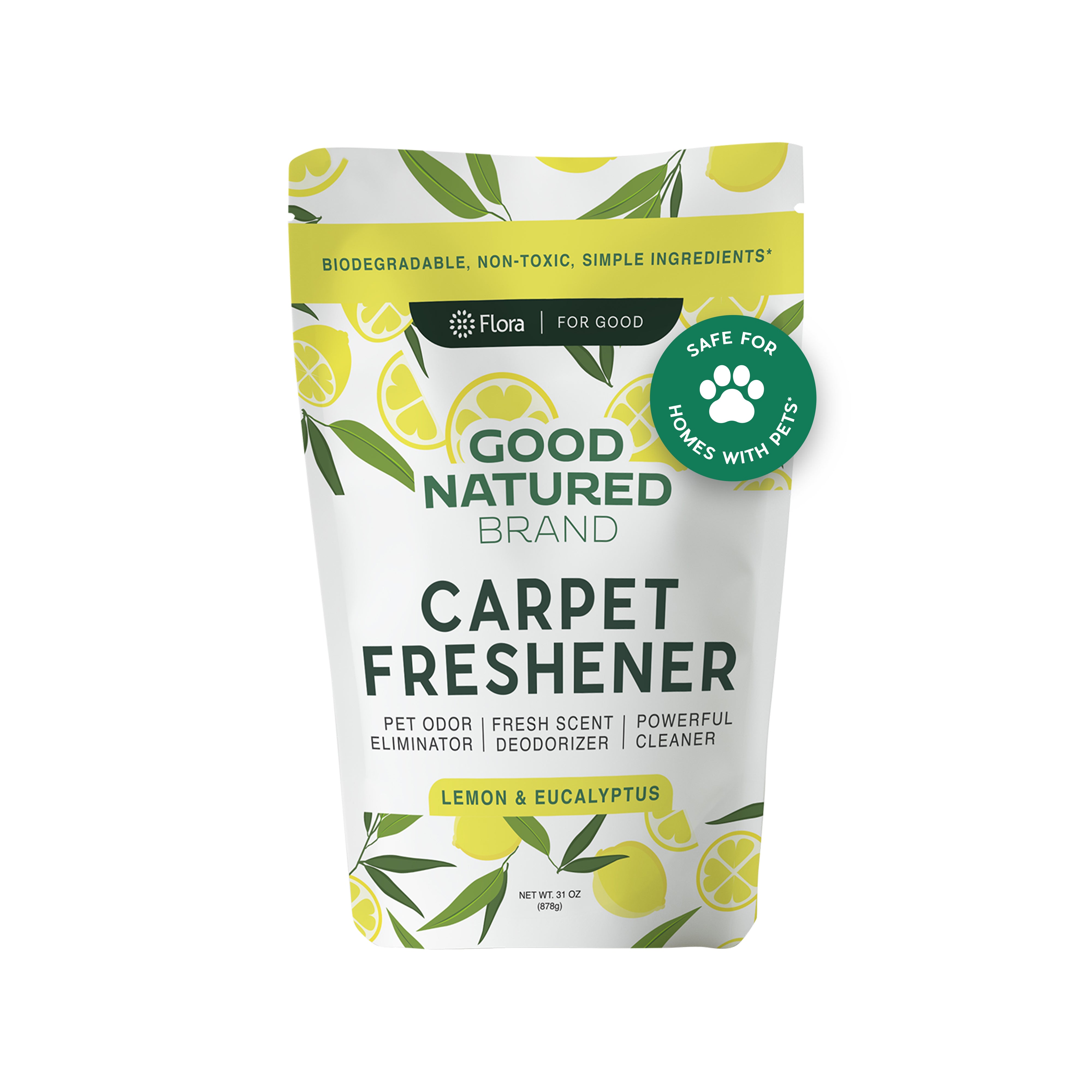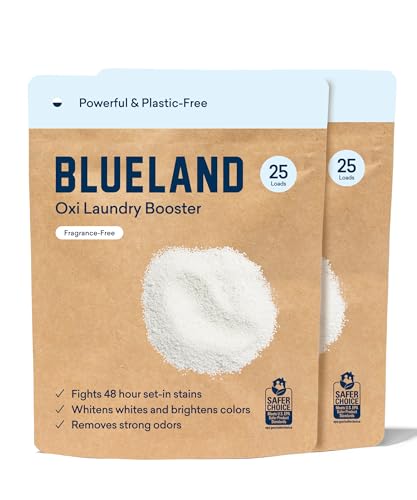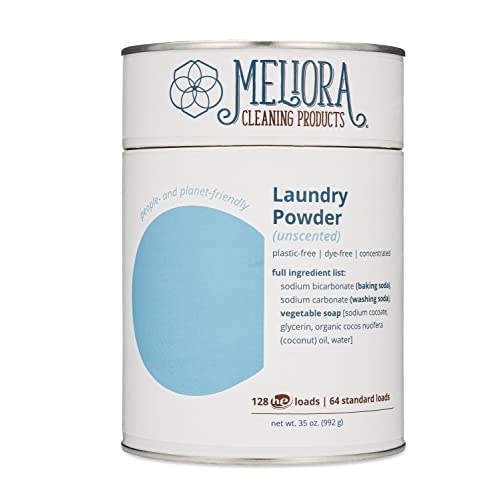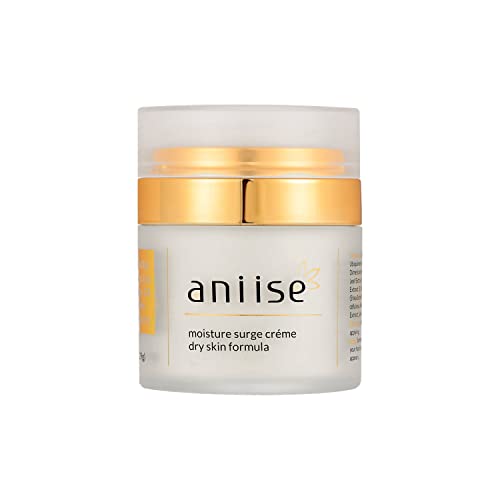
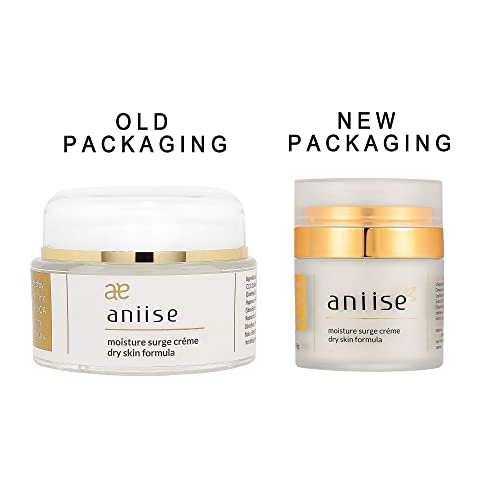
Aniise Moisturizer Surge Cream - Deep Hydration, Nourishing Shea & Avocado - 50ml


Anthemis Nobilis (Chamomile)
High RiskAnthemis nobilis, commonly known as chamomile, is derived from the flowering plant of the same name. It is often used in various preparations for its soothing properties and is commonly included in personal care products for its potential calming effects on the skin.
Sustai Insights
Chamomile offers functional benefits such as skin soothing and anti-inflammatory properties. However, it carries a high allergenic potential, posing risks for individuals with sensitivities. Environmental concerns include low neurotoxicity and minimal pollution risk. Regulatory bodies have noted restrictions on its use. Overall, the ingredient is assessed to have a high risk due to these factors, especially concerning allergic reactions.
Retinyl Palmitate (Vitamin A Palmitate)
High RiskRetinyl palmitate, also known as vitamin A palmitate, is an ester of retinol and palmitic acid. It serves primarily as a skin-conditioning agent, promoting skin health and rejuvenation through its role in cellular turnover and differentiation. This ingredient is commonly used in cosmetic formulations.
Sustai Insights
Retinyl palmitate offers functional benefits such as enhancing skin texture and providing anti-aging effects. However, it is associated with high developmental and reproductive toxicity concerns, while also posing moderate risks for carcinogenicity. Environmentally, it may contribute to pollution and bioaccumulation. Regulatory bodies have imposed use restrictions due to these health risks, leading to an overall high-risk assessment. Safe usage practices are essential, and alternatives like retinol or plant-derived vitamin A sources may be considered.
Sodium Borate
High RiskSodium borate, commonly known as borax, is a naturally occurring mineral used primarily as a cleaning agent, insecticide, and antifungal. It is often employed in various household and industrial applications for its properties as a pH buffer and preservative.
Sustai Insights
Sodium borate serves functional benefits such as enhancing cleaning efficiency and acting as a preservative. However, it is associated with health risks including low potential for carcinogenicity and low to moderate concerns regarding developmental and reproductive toxicity. Environmental risks include its classification as a pollutant and high use restrictions. Regulatory bodies have issued warnings about its use, reflecting a high overall risk. Safe usage practices should be followed, and alternatives like sodium bicarbonate may be considered for safer applications.
Unspecified Botanical Oil(s)
Medium RiskUnspecified botanical oils are natural extracts derived from various plant sources, commonly used in cosmetic and personal care products for their moisturizing, emollient, and fragrance properties. These oils can serve multiple functions, including enhancing product texture and providing skin benefits.
Sustai Insights
Unspecified botanical oils offer functional benefits such as moisturizing and emollient properties, contributing positively to product texture. Sustainability can be affirmed if sourced ethically. Health risks are low for carcinogenicity, allergies, and reproductive toxicity. Environmental concerns are minimal; however, regulatory bodies advise cautious use. Overall, the ingredient has a medium risk level, and users should consider alternatives like specific plant oils with established safety profiles.
Symphytum Officinale (Comfrey)
Medium RiskSymphytum officinale, commonly known as comfrey, is a perennial herbaceous plant utilized primarily for its topical applications. It is known for its potential skin-healing properties and is included in various cosmetic and therapeutic products.
Sustai Insights
Comfrey offers functional benefits, such as enhancing skin healing and aiding in inflammation reduction. However, it poses health risks, including moderate concerns regarding potential carcinogenicity and enhanced skin absorption leading to toxicity. Environmental risks are lower, with minimal pollution or bioaccumulation. Regulatory bodies have issued warnings about its use, particularly concerning oral ingestion. Overall, the risk level associated with comfrey is moderate. Safe usage practices recommend topical application only, and alternatives like aloe vera or calendula may provide safer options.
Chlorphenesin
Medium RiskChlorphenesin is a synthetic preservative commonly used in cosmetics and personal care products to prevent microbial growth and extend shelf life.
Sustai Insights
Chlorphenesin serves effectively as a preservative, contributing to product stability. While it poses low to moderate health risks, such as potential irritation and moderate use restrictions, it is not considered a carcinogen. Environmentally, concerns include persistence and bioaccumulation, with regulatory warnings from agencies like Environment Canada and ECHA. Overall, chlorphenesin is assessed as medium risk, highlighting the need for cautious usage and consideration of safer substitutes.
Propylene Glycol
Medium RiskPropylene glycol is a small organic alcohol commonly used in cosmetics and personal care products as a humectant, solvent, and emulsifier. It helps retain moisture, enhances product texture, and aids in the delivery of active ingredients.
Sustai Insights
Propylene glycol serves vital functional benefits, including moisture retention and product stability. It is generally recognized as safe with low concerns for carcinogenicity and developmental toxicity. However, there may be moderate allergenic potential for some individuals. Environmentally, it poses minimal pollution risks and is not bioaccumulative. Regulatory bodies do not impose significant restrictions on its use. Overall, it presents a medium risk due to its allergenic potential and the need for cautious usage in sensitive populations.
Phenoxyethanol
Medium RiskPhenoxyethanol is a preservative used in cosmetics and personal care products to prevent microbial growth and extend shelf life. It is commonly found in formulations such as lotions, creams, and serums.
Sustai Insights
Phenoxyethanol serves effectively as a preservative, ensuring product stability and safety by inhibiting microbial growth. It is considered to have low health risks regarding carcinogenicity, allergies, and reproductive toxicity. However, moderate use restrictions exist, and regulatory bodies have advised caution in specific applications. Environmental concerns include its potential as a pollutant, although it is not highly bioaccumulative. Overall, the ingredient presents a medium risk level, with safe usage practices recommended and alternative preservatives available for those seeking greener options.
Sorbic Acid
Medium RiskSorbic acid is a naturally occurring and synthetically produced compound primarily used as a preservative in food and cosmetic products. It effectively inhibits the growth of molds, yeasts, and some bacteria, thereby extending shelf life and maintaining product integrity.
Sustai Insights
Sorbic acid serves as an effective preservative, enhancing product longevity and safety. It is generally recognized as safe by the FDA and has a low risk for carcinogenicity, while exhibiting moderate allergenic potential. Environmental concerns include its potential as a pollutant, though it is not significantly bioaccumulative. Regulatory bodies impose few restrictions, indicating a moderate risk level overall. Safe usage practices should be followed, and alternatives like potassium sorbate may be considered for those seeking different options.
Vegetarian Glycerin
Low RiskVegetarian glycerin, also known as glycerol, is a colorless, odorless, and viscous liquid derived from plant sources. It is primarily used as a humectant, solvent, and emollient in various personal care products, helping to retain moisture and improve texture.
Sustai Insights
Vegetarian glycerin offers functional benefits as an effective humectant, promoting hydration and skin smoothness. It is biodegradable and typically sustainably sourced. Health risks associated with glycerin are low, with no significant concerns for carcinogenicity, allergens, or reproductive toxicity. Environmental risks are minimal, and it is not subject to major regulatory warnings. Overall, the risk level for this ingredient is low, making it a safe choice in formulations. Safe usage practices include ensuring proper concentrations in products, and alternatives such as propylene glycol exist but may have differing properties.
Citrus Limon (Lemon)
Low RiskCitrus limon, commonly known as lemon, is a citrus fruit used primarily for its juice and zest. It is often included in personal care products for its astringent properties and as a natural fragrance. It is recognized for its potential antioxidant benefits and as a source of vitamin C.
Sustai Insights
Citrus limon offers functional benefits like acting as a natural preservative and providing fragrance in formulations. It is sustainably sourced and biodegradable. Health risks are considered low for carcinogenicity, allergies, and reproductive toxicity. Environmental risks are minimal, with no significant bioaccumulation. Regulatory status is favorable, with no current restrictions noted. Overall, this ingredient poses a low risk, making it a safe choice for consumers.
Stearic Acid
Low RiskStearic acid is a naturally occurring fatty acid commonly found in animal and vegetable fats. It functions primarily as an emulsifier, thickener, and stabilizer in cosmetic and personal care products, providing texture and consistency.
Sustai Insights
Stearic acid offers functional benefits such as effective emulsification and stabilization of formulations. It is derived from renewable sources and is biodegradable, contributing to its sustainability profile. Health risks are low, with minimal concerns regarding carcinogenicity, allergies, or reproductive toxicity. Environmental risks are also low, with no significant pollutants or bioaccumulation concerns noted. Regulatory bodies, including the FDA, do not impose restrictions on its use. Overall, stearic acid is assessed as low risk, and its safe usage practices are well-established, with no significant alternatives needed.
Aloe Barbadensis (Aloe Vera)
Low RiskAloe barbadensis, commonly known as aloe vera, is derived from the succulent leaves of the aloe plant. It is widely used in cosmetic products for its soothing and moisturizing properties, often included for its potential skin benefits.
Sustai Insights
Aloe vera provides effective moisturizing and soothing benefits for the skin, supporting its use in various cosmetic formulations. It is generally considered safe, with low concerns for carcinogenicity, allergies, and reproductive toxicity. Regulatory bodies impose minimal restrictions, underlining its low-risk profile. While environmental impacts are minimal, its sustainability credentials depend on sourcing practices. Safe usage includes topical application, with no significant adverse effects reported. Alternatives exist, such as plant-based gels, but aloe vera remains a favored choice due to its low-risk assessment.
Fish Oil
Low RiskFish oil is derived from the tissues of oily fish and is primarily used for its omega-3 fatty acids, which are beneficial for cardiovascular health. It is commonly incorporated in dietary supplements and food products to enhance nutritional value.
Sustai Insights
Fish oil offers functional benefits as a source of omega-3 fatty acids, known for supporting heart health and reducing inflammation. It is generally considered low risk for health concerns, including cancer and allergies. Environmental impacts are minimal, and it is sustainably sourced in many cases. Regulatory bodies do not impose significant restrictions on its use. Overall, fish oil is associated with low risk, making it a favorable ingredient in health products.
Lavandula (Lavender) Flower
Low RiskLavandula (lavender) flower refers to unspecified preparations of the lavender plant, known for its aromatic properties. It is commonly used in various products for fragrance and potential therapeutic benefits, such as calming effects. The ingredient has a low risk profile regarding common health concerns.
Sustai Insights
Lavender flower offers functional benefits primarily as a fragrance and potential calming agent in products. It is considered sustainably sourced with low environmental impact and is not associated with significant health risks, such as carcinogenicity, allergies, or reproductive toxicity. Regulatory bodies, including the FDA, do not impose restrictions on its use. However, as with any ingredient, proper usage is recommended to mitigate any minor irritation risks. Overall, it presents a low-risk profile, making it a favorable choice in formulations.
Allantoin
Low RiskAllantoin is a naturally occurring nitrogenous compound found in various plants and animals. It is commonly used in cosmetic formulations for its soothing and moisturizing properties, as well as its ability to promote skin cell turnover and healing.
Sustai Insights
Allantoin offers functional benefits such as skin soothing, hydration, and promoting cell regeneration. It is generally recognized as safe, with low concerns regarding carcinogenicity, allergies, and reproductive toxicity. Environmentally, it poses minimal risks, being biodegradable and sustainably sourced. Regulatory bodies do not impose significant restrictions on its use. Overall, the risk level associated with allantoin is low, making it a favorable ingredient in personal care products.
Corylus (Hazelnut) Oil
Low RiskCorylus (hazelnut) oil is derived from the nuts of the hazel tree. It is primarily used in cosmetic and skincare products for its emollient properties, providing moisture and enhancing skin texture. The oil is rich in fatty acids and vitamins, contributing to its function as a skin conditioning agent.
Sustai Insights
Corylus (hazelnut) oil offers functional benefits as a moisturizer and skin conditioner while being biodegradable and potentially sustainably sourced. Health risks are low, with minimal concerns related to carcinogenicity, allergenic potential, or reproductive toxicity. Environmental impacts are also low, with no known bioaccumulation issues. Regulatory status shows no restrictions. Overall, the ingredient is assessed as low risk, with safe usage practices recommended and no significant alternatives noted.
Rosemary
Low RiskRosemary is a material derived from the Rosmarinus officinalis plant, commonly used in various products for its aromatic properties and potential antioxidant benefits. It serves primarily as a natural preservative and fragrance component.
Sustai Insights
Rosemary offers functional benefits as a natural preservative and antioxidant, with sustainability credentials due to its biodegradability and renewable sourcing. Health risks are low, with negligible concerns regarding carcinogenicity, allergenic potential, or reproductive toxicity. Environmental risks are minimal, with no significant pollutant or bioaccumulation issues. Regulatory bodies, including the FDA, do not impose restrictions on its use. Overall, rosemary is assessed as low risk, making it a suitable ingredient in formulations.
Cocos Nucifera (Coconut) Oil
Low RiskCocos Nucifera (Coconut) Oil is derived from the kernels of the coconut palm. It is primarily used in cosmetic formulations for its emollient and moisturizing properties, making it suitable for skin and hair care products.
Sustai Insights
Coconut oil serves as an effective moisturizer and emollient, promoting skin hydration and softness. It is sustainably sourced and biodegradable. Health risks are minimal, with low concerns regarding carcinogenicity, allergens, and reproductive toxicity. Environmental impact is also low, as it does not contribute significantly to pollution or bioaccumulation. Regulatory bodies have not issued restrictions on its use. Overall, coconut oil presents a low risk for health and environmental concerns, making it a safe ingredient in cosmetic products.
Vegetarian Glycerin
Low RiskVegetarian glycerin, also known as glycerol, is a colorless, odorless, and viscous liquid derived from plant sources. It is primarily used as a humectant, solvent, and emollient in various personal care products, helping to retain moisture and improve texture.
Sustai Insights
Vegetarian glycerin offers functional benefits as an effective humectant, promoting hydration and skin smoothness. It is biodegradable and typically sustainably sourced. Health risks associated with glycerin are low, with no significant concerns for carcinogenicity, allergens, or reproductive toxicity. Environmental risks are minimal, and it is not subject to major regulatory warnings. Overall, the risk level for this ingredient is low, making it a safe choice in formulations. Safe usage practices include ensuring proper concentrations in products, and alternatives such as propylene glycol exist but may have differing properties.
Unspecified Botanical Oil(s)
Medium RiskUnspecified botanical oils are natural extracts derived from various plant sources, commonly used in cosmetic and personal care products for their moisturizing, emollient, and fragrance properties. These oils can serve multiple functions, including enhancing product texture and providing skin benefits.
Sustai Insights
Unspecified botanical oils offer functional benefits such as moisturizing and emollient properties, contributing positively to product texture. Sustainability can be affirmed if sourced ethically. Health risks are low for carcinogenicity, allergies, and reproductive toxicity. Environmental concerns are minimal; however, regulatory bodies advise cautious use. Overall, the ingredient has a medium risk level, and users should consider alternatives like specific plant oils with established safety profiles.
Symphytum Officinale (Comfrey)
Medium RiskSymphytum officinale, commonly known as comfrey, is a perennial herbaceous plant utilized primarily for its topical applications. It is known for its potential skin-healing properties and is included in various cosmetic and therapeutic products.
Sustai Insights
Comfrey offers functional benefits, such as enhancing skin healing and aiding in inflammation reduction. However, it poses health risks, including moderate concerns regarding potential carcinogenicity and enhanced skin absorption leading to toxicity. Environmental risks are lower, with minimal pollution or bioaccumulation. Regulatory bodies have issued warnings about its use, particularly concerning oral ingestion. Overall, the risk level associated with comfrey is moderate. Safe usage practices recommend topical application only, and alternatives like aloe vera or calendula may provide safer options.
Citrus Limon (Lemon)
Low RiskCitrus limon, commonly known as lemon, is a citrus fruit used primarily for its juice and zest. It is often included in personal care products for its astringent properties and as a natural fragrance. It is recognized for its potential antioxidant benefits and as a source of vitamin C.
Sustai Insights
Citrus limon offers functional benefits like acting as a natural preservative and providing fragrance in formulations. It is sustainably sourced and biodegradable. Health risks are considered low for carcinogenicity, allergies, and reproductive toxicity. Environmental risks are minimal, with no significant bioaccumulation. Regulatory status is favorable, with no current restrictions noted. Overall, this ingredient poses a low risk, making it a safe choice for consumers.
Stearic Acid
Low RiskStearic acid is a naturally occurring fatty acid commonly found in animal and vegetable fats. It functions primarily as an emulsifier, thickener, and stabilizer in cosmetic and personal care products, providing texture and consistency.
Sustai Insights
Stearic acid offers functional benefits such as effective emulsification and stabilization of formulations. It is derived from renewable sources and is biodegradable, contributing to its sustainability profile. Health risks are low, with minimal concerns regarding carcinogenicity, allergies, or reproductive toxicity. Environmental risks are also low, with no significant pollutants or bioaccumulation concerns noted. Regulatory bodies, including the FDA, do not impose restrictions on its use. Overall, stearic acid is assessed as low risk, and its safe usage practices are well-established, with no significant alternatives needed.
Aloe Barbadensis (Aloe Vera)
Low RiskAloe barbadensis, commonly known as aloe vera, is derived from the succulent leaves of the aloe plant. It is widely used in cosmetic products for its soothing and moisturizing properties, often included for its potential skin benefits.
Sustai Insights
Aloe vera provides effective moisturizing and soothing benefits for the skin, supporting its use in various cosmetic formulations. It is generally considered safe, with low concerns for carcinogenicity, allergies, and reproductive toxicity. Regulatory bodies impose minimal restrictions, underlining its low-risk profile. While environmental impacts are minimal, its sustainability credentials depend on sourcing practices. Safe usage includes topical application, with no significant adverse effects reported. Alternatives exist, such as plant-based gels, but aloe vera remains a favored choice due to its low-risk assessment.
Chlorphenesin
Medium RiskChlorphenesin is a synthetic preservative commonly used in cosmetics and personal care products to prevent microbial growth and extend shelf life.
Sustai Insights
Chlorphenesin serves effectively as a preservative, contributing to product stability. While it poses low to moderate health risks, such as potential irritation and moderate use restrictions, it is not considered a carcinogen. Environmentally, concerns include persistence and bioaccumulation, with regulatory warnings from agencies like Environment Canada and ECHA. Overall, chlorphenesin is assessed as medium risk, highlighting the need for cautious usage and consideration of safer substitutes.
Fish Oil
Low RiskFish oil is derived from the tissues of oily fish and is primarily used for its omega-3 fatty acids, which are beneficial for cardiovascular health. It is commonly incorporated in dietary supplements and food products to enhance nutritional value.
Sustai Insights
Fish oil offers functional benefits as a source of omega-3 fatty acids, known for supporting heart health and reducing inflammation. It is generally considered low risk for health concerns, including cancer and allergies. Environmental impacts are minimal, and it is sustainably sourced in many cases. Regulatory bodies do not impose significant restrictions on its use. Overall, fish oil is associated with low risk, making it a favorable ingredient in health products.
Propylene Glycol
Medium RiskPropylene glycol is a small organic alcohol commonly used in cosmetics and personal care products as a humectant, solvent, and emulsifier. It helps retain moisture, enhances product texture, and aids in the delivery of active ingredients.
Sustai Insights
Propylene glycol serves vital functional benefits, including moisture retention and product stability. It is generally recognized as safe with low concerns for carcinogenicity and developmental toxicity. However, there may be moderate allergenic potential for some individuals. Environmentally, it poses minimal pollution risks and is not bioaccumulative. Regulatory bodies do not impose significant restrictions on its use. Overall, it presents a medium risk due to its allergenic potential and the need for cautious usage in sensitive populations.
Anthemis Nobilis (Chamomile)
High RiskAnthemis nobilis, commonly known as chamomile, is derived from the flowering plant of the same name. It is often used in various preparations for its soothing properties and is commonly included in personal care products for its potential calming effects on the skin.
Sustai Insights
Chamomile offers functional benefits such as skin soothing and anti-inflammatory properties. However, it carries a high allergenic potential, posing risks for individuals with sensitivities. Environmental concerns include low neurotoxicity and minimal pollution risk. Regulatory bodies have noted restrictions on its use. Overall, the ingredient is assessed to have a high risk due to these factors, especially concerning allergic reactions.
Retinyl Palmitate (Vitamin A Palmitate)
High RiskRetinyl palmitate, also known as vitamin A palmitate, is an ester of retinol and palmitic acid. It serves primarily as a skin-conditioning agent, promoting skin health and rejuvenation through its role in cellular turnover and differentiation. This ingredient is commonly used in cosmetic formulations.
Sustai Insights
Retinyl palmitate offers functional benefits such as enhancing skin texture and providing anti-aging effects. However, it is associated with high developmental and reproductive toxicity concerns, while also posing moderate risks for carcinogenicity. Environmentally, it may contribute to pollution and bioaccumulation. Regulatory bodies have imposed use restrictions due to these health risks, leading to an overall high-risk assessment. Safe usage practices are essential, and alternatives like retinol or plant-derived vitamin A sources may be considered.
Lavandula (Lavender) Flower
Low RiskLavandula (lavender) flower refers to unspecified preparations of the lavender plant, known for its aromatic properties. It is commonly used in various products for fragrance and potential therapeutic benefits, such as calming effects. The ingredient has a low risk profile regarding common health concerns.
Sustai Insights
Lavender flower offers functional benefits primarily as a fragrance and potential calming agent in products. It is considered sustainably sourced with low environmental impact and is not associated with significant health risks, such as carcinogenicity, allergies, or reproductive toxicity. Regulatory bodies, including the FDA, do not impose restrictions on its use. However, as with any ingredient, proper usage is recommended to mitigate any minor irritation risks. Overall, it presents a low-risk profile, making it a favorable choice in formulations.
Sodium Borate
High RiskSodium borate, commonly known as borax, is a naturally occurring mineral used primarily as a cleaning agent, insecticide, and antifungal. It is often employed in various household and industrial applications for its properties as a pH buffer and preservative.
Sustai Insights
Sodium borate serves functional benefits such as enhancing cleaning efficiency and acting as a preservative. However, it is associated with health risks including low potential for carcinogenicity and low to moderate concerns regarding developmental and reproductive toxicity. Environmental risks include its classification as a pollutant and high use restrictions. Regulatory bodies have issued warnings about its use, reflecting a high overall risk. Safe usage practices should be followed, and alternatives like sodium bicarbonate may be considered for safer applications.
Allantoin
Low RiskAllantoin is a naturally occurring nitrogenous compound found in various plants and animals. It is commonly used in cosmetic formulations for its soothing and moisturizing properties, as well as its ability to promote skin cell turnover and healing.
Sustai Insights
Allantoin offers functional benefits such as skin soothing, hydration, and promoting cell regeneration. It is generally recognized as safe, with low concerns regarding carcinogenicity, allergies, and reproductive toxicity. Environmentally, it poses minimal risks, being biodegradable and sustainably sourced. Regulatory bodies do not impose significant restrictions on its use. Overall, the risk level associated with allantoin is low, making it a favorable ingredient in personal care products.
Corylus (Hazelnut) Oil
Low RiskCorylus (hazelnut) oil is derived from the nuts of the hazel tree. It is primarily used in cosmetic and skincare products for its emollient properties, providing moisture and enhancing skin texture. The oil is rich in fatty acids and vitamins, contributing to its function as a skin conditioning agent.
Sustai Insights
Corylus (hazelnut) oil offers functional benefits as a moisturizer and skin conditioner while being biodegradable and potentially sustainably sourced. Health risks are low, with minimal concerns related to carcinogenicity, allergenic potential, or reproductive toxicity. Environmental impacts are also low, with no known bioaccumulation issues. Regulatory status shows no restrictions. Overall, the ingredient is assessed as low risk, with safe usage practices recommended and no significant alternatives noted.
Rosemary
Low RiskRosemary is a material derived from the Rosmarinus officinalis plant, commonly used in various products for its aromatic properties and potential antioxidant benefits. It serves primarily as a natural preservative and fragrance component.
Sustai Insights
Rosemary offers functional benefits as a natural preservative and antioxidant, with sustainability credentials due to its biodegradability and renewable sourcing. Health risks are low, with negligible concerns regarding carcinogenicity, allergenic potential, or reproductive toxicity. Environmental risks are minimal, with no significant pollutant or bioaccumulation issues. Regulatory bodies, including the FDA, do not impose restrictions on its use. Overall, rosemary is assessed as low risk, making it a suitable ingredient in formulations.
Phenoxyethanol
Medium RiskPhenoxyethanol is a preservative used in cosmetics and personal care products to prevent microbial growth and extend shelf life. It is commonly found in formulations such as lotions, creams, and serums.
Sustai Insights
Phenoxyethanol serves effectively as a preservative, ensuring product stability and safety by inhibiting microbial growth. It is considered to have low health risks regarding carcinogenicity, allergies, and reproductive toxicity. However, moderate use restrictions exist, and regulatory bodies have advised caution in specific applications. Environmental concerns include its potential as a pollutant, although it is not highly bioaccumulative. Overall, the ingredient presents a medium risk level, with safe usage practices recommended and alternative preservatives available for those seeking greener options.
Cocos Nucifera (Coconut) Oil
Low RiskCocos Nucifera (Coconut) Oil is derived from the kernels of the coconut palm. It is primarily used in cosmetic formulations for its emollient and moisturizing properties, making it suitable for skin and hair care products.
Sustai Insights
Coconut oil serves as an effective moisturizer and emollient, promoting skin hydration and softness. It is sustainably sourced and biodegradable. Health risks are minimal, with low concerns regarding carcinogenicity, allergens, and reproductive toxicity. Environmental impact is also low, as it does not contribute significantly to pollution or bioaccumulation. Regulatory bodies have not issued restrictions on its use. Overall, coconut oil presents a low risk for health and environmental concerns, making it a safe ingredient in cosmetic products.
Sorbic Acid
Medium RiskSorbic acid is a naturally occurring and synthetically produced compound primarily used as a preservative in food and cosmetic products. It effectively inhibits the growth of molds, yeasts, and some bacteria, thereby extending shelf life and maintaining product integrity.
Sustai Insights
Sorbic acid serves as an effective preservative, enhancing product longevity and safety. It is generally recognized as safe by the FDA and has a low risk for carcinogenicity, while exhibiting moderate allergenic potential. Environmental concerns include its potential as a pollutant, though it is not significantly bioaccumulative. Regulatory bodies impose few restrictions, indicating a moderate risk level overall. Safe usage practices should be followed, and alternatives like potassium sorbate may be considered for those seeking different options.
Discover the Aniise All-Natural Moisturizer Surge Cream, designed specifically for dry skin. This creamy, weightless formula combines the nourishing power of shea butter and avocado oil to deliver deep hydration while promoting skin's natural repair processes. Perfect for environmentally and health-conscious consumers, this vegan and cruelty-free moisturizer prioritizes both your skin's health and the planet's wellbeing.
- Deep Hydration: Instantly calms and softens dry skin, locking in moisture for prolonged hydration.
- Cellular Repair: Active ingredients penetrate the dermis, targeting collagen and elastin to visibly reduce signs of aging.
- Nourishing Formula: Enriched with natural oils, vitamins, and botanicals that restore moisture to even the driest skin.
- Soothing Benefits: Shea butter and avocado oil work together to enhance skin elasticity and plumpness, minimizing the appearance of aging lines.
- Easy Application: Simply warm a small amount, pat onto clean skin, and enjoy lasting hydration day and night.
Experience the blend of nature and science with Aniise, committed to ethical practices and community impact.
Subscribe & Save with Sustai
- Best Price Guarantee: Always enjoy the lowest prices on sustainable home essentials.
- No Surprises: We’ll notify you before shipping. No hidden fees, ever.
- You’re in Charge: Change, pause, or cancel your subscription anytime with ease.
- Eco-Friendly Deliveries: Our grouped shipments mean less packaging and lower emissions.
Join us on a sustainable journey. Special offers for a limited time! Prices and promotions may change.
Recommended Products
Discover the Aniise All-Natural Moisturizer Surge Cream, designed specifically for dry skin. This creamy, weightless formula combines the nourishing power of shea butter and avocado oil to deliver deep hydration while promoting skin's natural repair processes. Perfect for environmentally and health-conscious consumers, this vegan and cruelty-free moisturizer prioritizes both your skin's health and the planet's wellbeing.
- Deep Hydration: Instantly calms and softens dry skin, locking in moisture for prolonged hydration.
- Cellular Repair: Active ingredients penetrate the dermis, targeting collagen and elastin to visibly reduce signs of aging.
- Nourishing Formula: Enriched with natural oils, vitamins, and botanicals that restore moisture to even the driest skin.
- Soothing Benefits: Shea butter and avocado oil work together to enhance skin elasticity and plumpness, minimizing the appearance of aging lines.
- Easy Application: Simply warm a small amount, pat onto clean skin, and enjoy lasting hydration day and night.
Experience the blend of nature and science with Aniise, committed to ethical practices and community impact.

You can have at most 2 Sustainable Steals products in your cart
Customer Reviews
Customers’ View
Customers appreciate the moisturizing properties and natural formulation of this product, noting its effectiveness in revitalizing dry skin. Many users have observed that it makes their skin feel supple and radiant, with some reporting a reduction in blemishes and an overall glow. The weightless cream is recognized for its easy application and quick absorption, which aligns with a health-conscious lifestyle. Additionally, the inclusion of nourishing botanicals like shea butter and avocado oil resonates with those seeking eco-friendly skincare solutions. Overall, customers find this moisturizer effective in promoting hydration while supporting their commitment to natural and cruelty-free products.
AI-generated from the text of customer reviewsThis product has no reviews yet.
